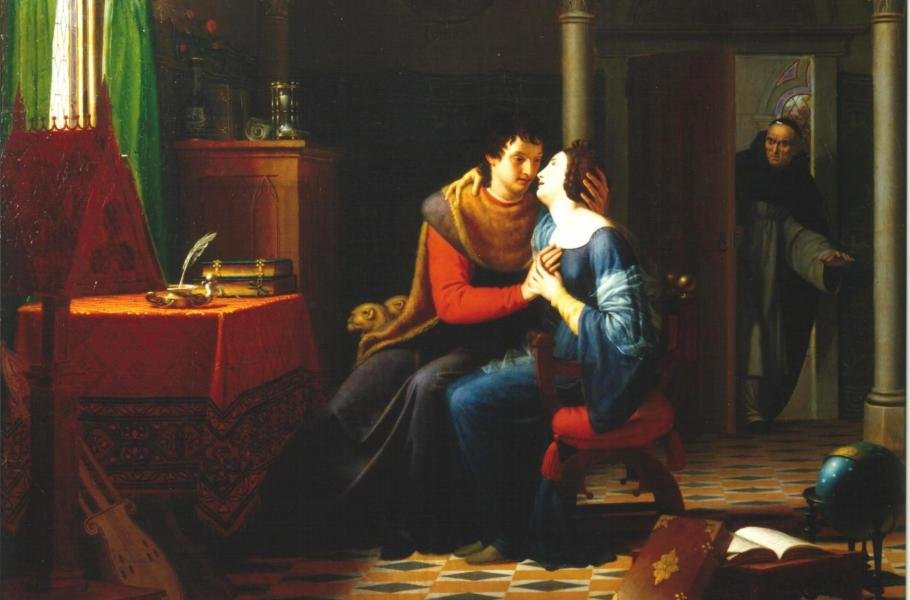Human sexual behavior has changed over the millennia, from socially acceptable promiscuity to a strictly regulated act under the supervision of church authorities. For example, the medieval rules of sexuality were extremely strict.
The roots of the medieval moral world came from two principles: from the ideas of the church fathers and from the old gender rules. Medieval thinkers (St. Augustine or St. Ambrose) created a moral concept in which they defined the place of gender in God’s work and the role of intercourse in the life of a Christian.
Although the ideas of ancient (Aristotle, Galénos) and Arab (Avicenna) authors were also reflected in their work, however, given that most of the church fathers were monks or hermits, it will probably not surprise anyone that the most recognized value was restraint. This is nicely illustrated by Augustine’s statement that „the adulterer is also the one who burns too much with love for his own wife.“
Rules from the pen of hermits
In the light of medieval church morality, women had to be constantly moderated because they were much more subject to desire and physicality than men. It was also annoying that she should have been better off even with repeated pleasure. The woman’s desire simply could not be satisfied. It could be laughable, but rape viewed through this lens was not understood as a crime, because it was supposed to cause pleasure to the woman. Satisfaction was equated with fertilization, which was also a man’s main task. Ideally, he should have avoided excessive tenderness, because those would again cause looseness in women, which he would then not be able to control again, and the woman would be out of his control.
The church rules were quite simple: avoid nudity, limit intercourse to night time and reduce the number of intercourse as much as possible. The woman was supposed to be passive and leave all the activity to the man. The man should have used the connection method of the relevant person. Such positions were recommended, in which the man had an exclusively dominant position (more canino intercourse, i.e. in a dog’s way, was then considered downright monstrous). Sexual intercourse was not allowed during the so-called forbidden periods, which at first were more than 250 days a year, but were gradually shortened.
Honorable women and honorable whores
The double morality in which the common medieval person lived was also manifested in the fact that the Roman-Christian marriage model had to continue to submit to an extensive system of tribal and kinship relations. In large families, concubinage still prevailed, and temporary flings were commonplace. Such a Charlemagne was supposed to have a total of eleven wives and constant companions, plus a number of mistresses. These practices sometimes led to the ostracism of barren wives and later to church divorces, giving us some of the few direct written evidence of issues related to female sexuality.
Over the centuries, theoretical theology began to approach the needs of reality, and church authorities revised the view of intercourse at least from the male point of view. Poets and philosophers began to declare that it was not good to oppose nature and that restraint was dangerous. This cleared the field for the sexual freedom of young men who satisfied their needs with prostitutes.
In the 15th century, we already encounter the relative „integration“ of prostitution. The most famous „honor whores“ of their time practiced the oldest trade in the city’s baths. We also encounter this phenomenon in Czech history. The bathhouse was the target of frequent visits even in the case of King Wenceslas IV, who, according to some historians, was directly obsessed with bathhouses.
Manly and manlier
With the year 1400, the hunt for Sodomites intensified. Homosexuality and autoeroticism were considered the worst. The hateful incantation of sodomy by church preachers caused an unhealthy exaltation of the values of masculinity. This sometimes ended with the mass rape of poor girls or women with a bad reputation. The same principle began to manifest itself in the field of marital intercourse
The reality of the medieval bedroom was far from the novelistic stories of the red library. Husbands and wives were definitely not equal partners, and certainly not in bed. The woman was supposed to be chaste in the first place and there was no question of any initiative in the sexual area.




